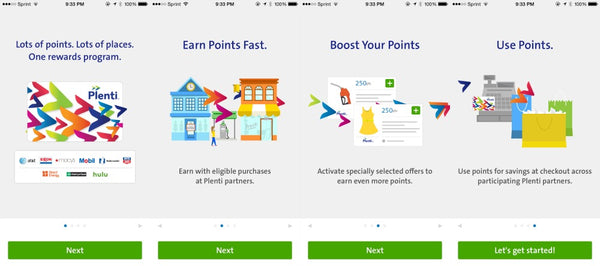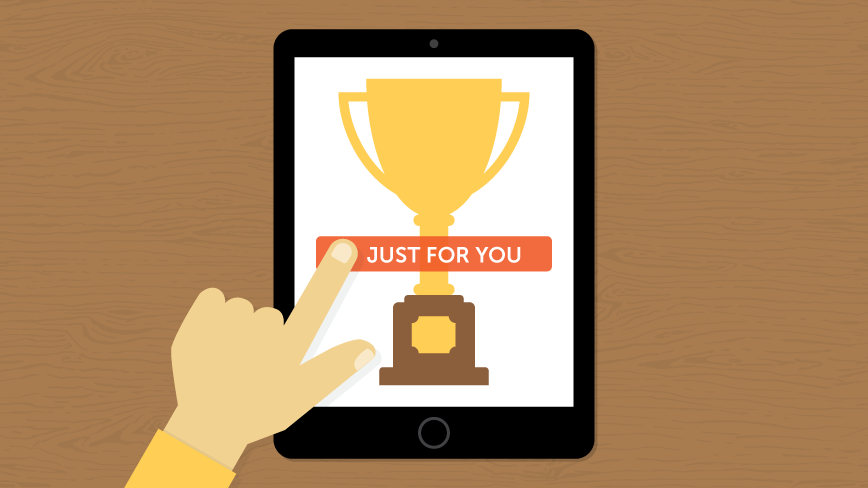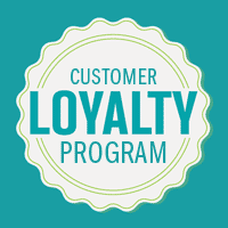All Categories
Featured
Table of Contents
In North Wales, PA, Mira Saunders and Seamus Pitts Learned About Marketing Efforts

What if you could grow your service without increasing your spending? In fact, what if you could in fact reduce your spending however increase your sales, every year? Would you do it? If you're a company owner, then you'll likely give a definite 'yes', an easy response to an even simpler concern.
A rewards program tracks and rewards certain spending behavior by the customer, offering unique benefits to loyal customers who continue to shop with a certain brand name. The more that the client invests in the shop, the more advantages they get. With time, this incentive develops devoted clients out of an existing client base.

Even if you already have a reward program in place, it's a great idea to dig in and totally understand what makes consumer commitment programs work, along with how to implement one that costs you little cash and time. Don't fret, I'll assist you with that. I'll break down the primary benefits of a commitment program and the very best ways to develop faithful clients.
Let's dig in. Customer loyalty is when a client returns to work with your brand name over your rivals and is mostly affected by the favorable experiences that the customer has with your brand. The more favorable the experience, the most likely they will go back to shop with you. Customer commitment is extremely essential to organizations because it will help you grow your business and sales faster than an easy marketing plan that concentrates on hiring brand-new customers alone.
A few methods to measure consumer commitment include:. NPS tools either send out a brand efficiency study through e-mail or ask clients for feedback while they are visiting a company's website. This information can then be used to much better understand the likelihood of consumer commitment. A repurchase ratio measures the ratio of repeat buyers versus one-time purchasers.
Consumer commitment index (CLI). The CLI tracks customer commitment gradually and is comparable to an NPS survey. However, it considers a few extra factors on top of NPS like upselling and buying. These metrics are then used to assess brand loyalty. A client commitment program is a marketing method that rewards clients who make purchases and engage with the brand name on an ongoing basis.
Client benefits programs are created to incentivize future purchases. This motivates them to continue working with your brand name. Consumer commitment programs can be set up in various methods. A popular consumer commitment program rewards consumers through a points system, which can then be invested on future purchases. Another kind of consumer commitment program might reward them with member-exclusive advantages or free gifts, or it may even reward them by contributing money to a charity that you and your clients are mutually passionate about.
In 53511, Clare Ballard and Francisco Bowers Learned About Customer Loyalty
By providing rewards to your clients for being loyal and supportive, you'll develop a rapport with them, deepening their relationship with your brand name and ideally making it less likely for them to change to a competitor. You've likely seen consumer loyalty programs in your own shopping experience, whether at your favorite cafes or your most frequented grocery shops.
However just since everybody is doing it doesn't mean that's a sufficient reason for you to do it too. The better you comprehend the advantages of a consumer rewards program, the more clearness you will have as you develop one for your own shop. You won't be sidetracked by amazing benefits and complex loyalty points systems.
Remember: work smarter, not harder. Client retention is the main advantage of a rewards program that functions as a structure to all of the other advantages. As you supply rewards for your existing customer base to continue to buy from your shop, you will provide your store with a steady flow of money month after month.
By growing your retention rate, you can stop investing as much time or money on increasing your general variety of customers. Why is this important? Faithful consumers have a greater conversion rate than new consumers, indicating they are most likely to make a transaction when they visit your shop than a brand-new consumer.
By increasing your retention rate by only 5 percent, you can increase your profits by 25 percent and as much as by 95 percent. Needless to say, your retention rate matters. Key Takeaway: If you desire to substantially increase your profits, provide incentives for your existing customers to continue to patronize your shop.
And you won't need to spend cash on marketing to get them there. Consumer acquisition (aka bringing in brand-new clients) takes a lot of effort and cash to convince total strangers to trust your brand, concerned your store, and try your products. In the end, any cash made by this new customer is overshadowed by all of the money invested in getting them there.
Key Takeaway: If you wish to reduce spending, focus on consumer retention rather of customer acquisition. When you focus on providing a positive personalized experience for your existing consumers, they will naturally inform their family and friends about your brand name. And with each subsequent deal, devoted consumers will tell a lot more individuals per deal.
In Annandale, VA, Abdiel Hodge and Justice Mcintyre Learned About Current Provider
The finest part? Due to the fact that these new customers originated from trusted sources, they are more most likely to become loyal consumers themselves, spending more on average than brand-new customers generated by other marketing efforts. The Chase Ultimate Benefits program, for example, offers major advantages for people who take a trip a lot.
The 'ultimate benefits' that Chase cardholders get include 2x points per dollar invested on all travel purchases in addition to main rental car insurance, no foreign deal costs, journey cancellation insurance, and purchase defense. For individuals who travel a lotand have non reusable earnings to do sothere is a huge reward to invest cash through the supreme benefits program.
This whole process makes redeeming rewards something worth extoling, which is exactly what many cardholders end up doing. And to help them do it, Chase uses a perk for that too. Key Takeaway: Make it simple for your clients to boast about you and they will get the word out about your look for totally free.
As soon as you get the basics down, then using a loyalty rewards app can help look after the technical information. Here are the actions to begin with producing your client loyalty program. No client wishes to purchase products they don't want or require. The exact same goes for your loyalty program.
And the only way to customize an alluring customer loyalty program is by intimately knowing your consumer base. The best way to do this? By executing these techniques: Build consumer contact information anywhere possible. Ensure your service is continuously building a comprehensive contact list that enables you to gain access to existing clients as frequently and as easily as possible.

Track client habits. Know what your clients want and when they desire it. In doing so, you can expect their wants and needs and supply them with a loyalty program that will please them. Classify client individual qualities and preferences. Take a multi-faceted technique, don't limit your commitment program to simply one opportunity of success.
Encourage social networks engagement. Frame strategies to engage with your clients and target market on social networks. They will quickly provide you with really informative feedback on your services and products, permitting you to much better understand what they get out of your brand. Once you have exercised who your consumers are and why they are working with your brand name, it's time to choose which kind of commitment rewards program will encourage them to stay loyal to you.
In 10550, Alivia Holden and Rory Roberson Learned About Potential Clients
However, the most typical client loyalty programs centralize around these main ideas: The points program. This type of program focuses on gratifying customers for each purchase they make with points in a point system. These points can then either be used on future purchases or put towards some form of benefit.
The paid program. This type of program requires clients to pay a one-time or annual charge to join your VIP list. Loyalty members who come from this list are able to gain access to unique benefits or member-exclusive advantages. The charity program. This type of program is a little various than the others.
This is accomplished by motivating them to do company with the brand name and, in return, their loyalty will be rewarded with a contribution to a charity. The tier program. This kind of program concentrates on increasing levels of brand loyalty. The more devoted a client is to a brand name, the greater tier they will climb up to and the better the benefits they will get.
This type of program is simply as it sounds, where one brand partners with another brand to offer their cumulative audiences with unique member discount rates or offers that they can redeem while working with either brand. The community program. This kind of program incentivizes brand name loyalty by offering its members with access to a like-minded neighborhood of individuals.
This kind of program is fairly comparable to paid programs, nevertheless, the membership cost happens regularly instead of a one-time payment. Next, choose which client interactions you 'd like to reward. Base these benefits around which interactions benefit your business one of the most. For instance, to assist your company out, you can use action-based rewards like these: Reward consumers more when doing business with your brand name throughout a slow period of the year or on a notoriously sluggish day of business.
Reward customers for engaging with your brand name on social media. Incentivize particular products you are trying to move quickly. Incentivize purchases that are over a particular dollar amount. The concept is to make your customer loyalty program as easy as possible for your consumers to use. If your consumer commitment program isn't personnel friendly, isn't simple to track, is too expensive to run, or isn't easy for your consumers to utilize or understand, then personnel and clients alike most likely will not make the most of it.
To remove these barriers to entry, consider incorporating a consumer commitment software that will help you keep on top of all of these aspects of your program. Some quality customer program software application consist of:. CandyBar is a digital punch card program. It works by tracking your customer's purchases through an app on a computer, phone, or tablet.
In 30281, Byron Best and Fabian Walker Learned About Online Sales
Commitment members can then check their benefits by means of text and entrepreneur can use the program to call their consumers. Yotpo. Yotpo is a cloud-based customer loyalty platform specifically for eCommerce services. This software application is especially good at gathering every type of user-generated content, useful for customizing a better consumer experience.
Loopy Loyalty is a convenient client commitment software application for organizations that mainly utilize Google Wallet or Apple Pay as their payment platforms. The software application produces a digital commitment card that sends push alerts to their consumers' phones when they remain in close distance to their brick and mortar shop. As soon as you have actually made the effort to choose which consumer commitment strategies you are going to execute, it's time to start promoting and registering your very first loyalty members.
Use in-store advertisements, integrate call-to-actions on your website, send promos through email newsletters, or upload promotional posts on social networks to get your clients to sign up with. It's crucial to understand the main advantages of a consumer rewards program so that you can develop a tailored experience for both you and your consumer.
Believe about it. You understand what kinds of items your customers like to purchase however do you know what brings them back, day after day, week after week? What makes them pick your store over the store across the street? What makes them your consumer and not the consumer of your greatest rival? Surprisingly, the answers to these questions do not come down to discount rate prices or quality items.
Table of Contents
Latest Posts
What Is Web Design? The Ultimate Guide To Website Design ... Tips and Tricks:
53 Web Design Tools To Help You Work Smarter In 2022 Tips and Tricks:
Indianapolis Web Design And Digital Marketing Agency Tips and Tricks:
More
Latest Posts
What Is Web Design? The Ultimate Guide To Website Design ... Tips and Tricks:
53 Web Design Tools To Help You Work Smarter In 2022 Tips and Tricks:
Indianapolis Web Design And Digital Marketing Agency Tips and Tricks: